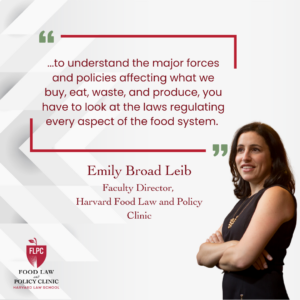Originally published on April 10, 2020 by HuffPost. Written by Olivia Paschal
Small farms are finding new ways to stay in business as the pandemic shuts down farmers markets and restaurants.
Karin Velez counts herself lucky. Wolf Creek Family Farm, which she runs with her husband in Peculiar, Missouri, had a website, a Facebook page, and an Instagram presence before the coronavirus pandemic hit. When the largest of the five farmers markets where they sell their goods announced it was delaying its opening by several weeks, she was able to pivot to online sales within just a few days, and quickly publicize the change to her regular customers.
“It took me about three days of around-the-clock work,” she said. But for her friends at neighboring farms, it hasn’t been such a smooth transition. “I designed our website, I have experience in these types of things. I’ve had other farmers contact me and say, ‘Can you help me? Because I’m lost.’”
The pivot was necessary, and well-timed: Wolf Creek had a surplus of food but nowhere to sell it as farmers markets delayed opening. But since setting up shop online, she’s seen orders roll in.
Velez now hand-delivers her CSA boxes and online orders rather than make her customers, many of them elderly, drive out to the farm. “Leave a cooler on the door, I’ll drop it in there, and you can wave from the window,” she tells them. But that extra delivery time takes her away from the work that still needs to be done on the farm, where she and her husband pull 12-hour, even 15-hour, days in preparation for when farmers markets, deemed essential in places like Kansas City, do eventually open.
The coronavirus pandemic has ushered in a fresh wave of interest in local food as consumers are confronted by the apparent shakiness of the global food supply chain. And this trend is offering a lifeline to many small farms across the country that are learning to adapt as their normal revenue streams run dry.
Local farming, like everything else, has changed dramatically during the pandemic. Farmers markets are delaying their opening dates ― and many of those that are open are seeing visitor numbers plummet. Meanwhile the traditional middlemen of farm-to-table restaurants have been suddenly cut out of the equation. And this disruption has come at a critical time.
For small farmers in the Midwest, parts of the South, and on the East Coast, the spring and summer months are vital. Crops start coming in, farmers markets start opening up, and cash-strapped farms start making back the money they spent buying and planting seeds months earlier. But now? “All this money has gone out the door, or is still going out the door,” said Velez. There’s no expectation of when they’ll make it back — if at all. The National Sustainable Agriculture Coalition estimates there could be $689 million in lost revenue industrywide.
Despite these huge challenges, many farmers are seeing a massive rise in demand for local produce. For some, it’s changed their business model entirely and offered a potential route to survival.
“We were at the point, prior to this pandemic, where 50% or more of meals were consumed away from the home,” said Emily Broad Leib, the director of the Harvard Law School Food Law and Policy Clinic. Now, she said, people are relying almost entirely on home-cooked meals and grocery stores. Crowded stores and empty shelves have pushed some customers away from big box stores and towards their local farm produce. And then there’s the health concerns that come with buying produce that’s been passed around from farm to delivery truck to shelf stocker to fellow shoppers.
“I think folks are starting to realize how many hands actually touch their produce, and how far their produce actually has to travel to get into their grocery store,” said Katie Breen, who runs Infinity Hundred Farms in Raleigh, North Carolina, with her partner David McConnell. For a small farm like theirs, just two or three people interact with produce before it ends up in customers’ kitchens. They’ve seen an explosion in interest in their CSA produce share program, which they offer year-round.
CSA customers pay upfront and then receive boxes of produce throughout the year. In a normal season, Infinity Hundred serves somewhere between 20 and 40 families. But in the last few weeks alone, they’ve seen that number rise to nearly 100. McConnell expects it to climb even higher. They’ll eventually need to cap it at about 150 to make sure their sales don’t outrun their growing capacity.
Like many farmers, Breen and McConnell have altered their model to fit the needs of the moment. Rather than have customers come pick up their produce boxes, they’ve started delivering. They’ve also lowered their prices by 15% to make the CSA more financially accessible, though the upfront cost — $300 for 10 weeks of delivery — is still prohibitive for some. Each week’s box contains at least eight items — some combination of root vegetables, lettuces, shoots, sprouts, microgreens, herbs, mushrooms or berries, depending on what’s ready to harvest.
While $30 for eight pieces of produce might sound high, Breen and McConnell argue the benefits far outweigh the cost. Not only is local food more sustainable and nutritious than your average produce item in the grocery store, they argue, but signing up to your local CSA helps cut down the number of people, and amount of time spent, in the grocery store ― important factors to help limit physical interaction and slow the spread of the coronavirus.
CSA prices vary farm-to-farm and community-to-community: many farms offer sliding scales or payment plans for customers for whom the full upfront cost could be prohibitive. But as demand for local food rises, prices are likely to go up as well. “There’s an equity issue to begin with, and it may get worse,” said Broad Leib.
For consumers who can access local food, however, buying local is becoming a more dependable option — not just for the current crisis, but as climate change begins to alter the environment and food systems in the coming years. “In times like this where there’s serious challenges in the global health system and economic system, I think the global supply chains become a little more fragile as well,” said Broad Leib. “It’s really shining a spotlight on a system that has a lot of frailties.”
“It feels like a drill” for climate change, said Boyce Upholt, a writer in New Orleans who has started buying herbs from a local urban garden and bought a subscription box from a small-scale meat farm as a result of the pandemic. “I would love to be tapped into and support local food networks so that those are strong and sustainable — so that, as the world gets more complex and chaotic, these are options available to me.”
Pivoting quickly to direct-to-consumer sales is easiest for farmers who had CSAs, delivery, and online sales set up well before the pandemic hit. For other farms, like Rise and Root just outside New York City, it’s a more challenging adjustment. Much of their sustainability and food justice work came from bringing people from underrepresented backgrounds to the farm to show that it was possible for them to farm successfully. These events also drove sales — but they’re impossible to host for as long as the pandemic continues.
Owner Michaela Hayes also estimates that they’ve lost about 50% of their business to restaurant closures and will lose more to declining market sales. But she hopes the growing interest in locally-sourced food will translate into enough sales to hold them over ― they’re pushing online preorders of plant sales like tomatoes, greens and herbs to meet the rising demand of people who may be interested in growing their own food in the city.
And while it’s too early to say whether the trend of buying direct from the farm will outlast the pandemic, farmers and local food advocates are optimistic. “My hope is that the outcome of all this is that we’ll be more thoughtful about where we spend our food dollars and, as a society, about the policies that relate to food production,” said Broad Leib. “People who were just thinking before, ‘I could sign up for that but it’s easier to just go to the grocery store and get my produce,’ maybe are realizing, ‘Wow, this tastes good and I feel good about spending my dollars in this way.’”
Marty Travis, who runs Down at the Farms, a farm collective near Chicago, believes the pandemic will shift their business model almost entirely. The collective of more than 50 farmers typically deals exclusively with restaurants, selling them wholesale produce, meat, and other goods. But, due to the current crisis, they lost nearly all that business as restaurant shutdowns went into effect. So it was time for plan B.
Travis’ son posted on Facebook on March 17, just days after Illinois ordered all restaurants to close, notifying the community they could now order directly from Down at the Farms’ member farms online, and pick up all their products in a drive-through line at a centralized location. They promoted as much as possible — on the radio and social media — and set up delivery options for people in Chicago.
They now serve around 700 families in the Chicago area, providing boxes of goods collected from member farms. Business is actually better for them than it was when they were selling wholesale, Travis says: Profits were up about $1,000 the first week, and he expects the beginning of April to be their largest sales week ever.
Travis and other farmers in the collective have wanted to move toward direct-to-consumer sales for a long time — and the pandemic has provided them with the opportunity to do it. “During this time … we felt that it’s really important that folks have a choice of what they want to feed their families,” Travis said. “And we can supply that. This may go on for weeks, if not months. I’ve told our farmers to just keep planting.”
For more content and to be part of the “This New World” community, follow our Facebook page.
HuffPost’s “This New World” series is funded by Partners for a New Economy and the Kendeda Fund. All content is editorially independent, with no influence or input from the foundations. If you have an idea or tip for the editorial series, send an email to thisnewworld@huffpost.com.


Health Law & Policy, Commentary
Braidwood Management v. Becerra: Updated FAQs for Health Advocates and Providers
July 22, 2024